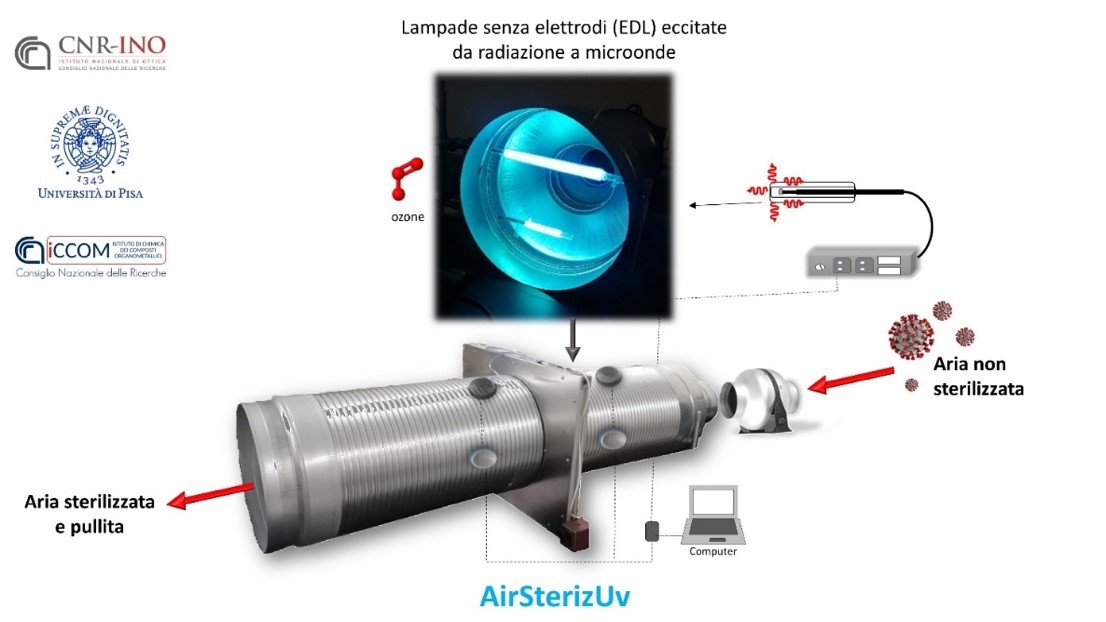First phase of the joint CNR-University of Pisa “AirSterizUv” Project successfully completed
The first phase of the AirSterizUv project (Sterilization of air in conditioning systems by means of UVC radiation produced by microwaves) carried out in the laboratories of the National Institute of Optics (INO), of the Institute of Chemistry of Organometallic Compounds (ICCOM) of the CNR, and of the Thermolab of the Department of Chemistry and Industrial Chemistry of UNIPI has been successfully completed. AirSterizUv has been funded by the Ministry of University and Research on the Special Integrative Fund for FISR Research, dedicated to the new needs and issues raised following the spread of the SARS-Cov virus- 2 and Covid-19 infection.
The development of the sterilization technology of air in conditioning systems in buildings, such as schools, hospitals and buildings open to the public, is a strategic point for addressing new phases of the pandemic or other future health threats. AirSterizUv proposes the use of an innovative technology to produce UVC radiation, based on electrodeless lamps (EDL) excited by the microwave radiation (MW), placed inside the conduits of the air in conditioning systems.

The heart of AirSterizUv is the patented microwave technology that uses immersion coaxial antennas developed by the physicist Iginio Longo (“Guglielmo Marconi” award from the Italian Physics Society). EDL lamps powered by MW radiation guarantee “a long-life expectancy for the lamp, a high radiated power, an intense emission line at 253 nm and a less intense line at 185 nm. The most energetic emission (VUV) produces ozone molecules from the air ”explains Carlo Ferrari, researcher of CNR-INO in Pisa and co-author of the patents. UV and ozone act as sterilizing agents. An appropriate filter is inserted to reduce the amount of ozone at the outlet. The online assessment of the amount of ozone generated and reduced by the filter and the development of suitable long-lasting filters is essential to ensure the safety of the air emitted, as explained by Emilia Bramanti of CNR-ICCOM. The project also evaluated the possibility of using in the filter an innovative material developed in the EU Life + SOREME ENV / IT / 109 project, obtained from the pyrolysis of the rubber of used tires, in the perspective of circular economy of exploiting any waste material.
The final goal of AirSterizUv was the creation of a TRL4 level prototype and the evaluation of its safety in terms of the production of harmful by-products (MW radiation losses, production of ozone and VOCs).
The Research Team of the AirSterizUv Project is composed by: Carlo Ferrari, Alessandro Lucchesini, Andrea Fioretti, Carlo Gabbanini, Jose Gonzalez Rivera and Alessandro Barbini (CNR-INO), Emilia Bramanti, Beatrice Campanella and Massimo Onor (CNR-ICCOM), Maria Rosaria Tinè, Celia Duce of Thermolab (DCCI-UNIPI).
